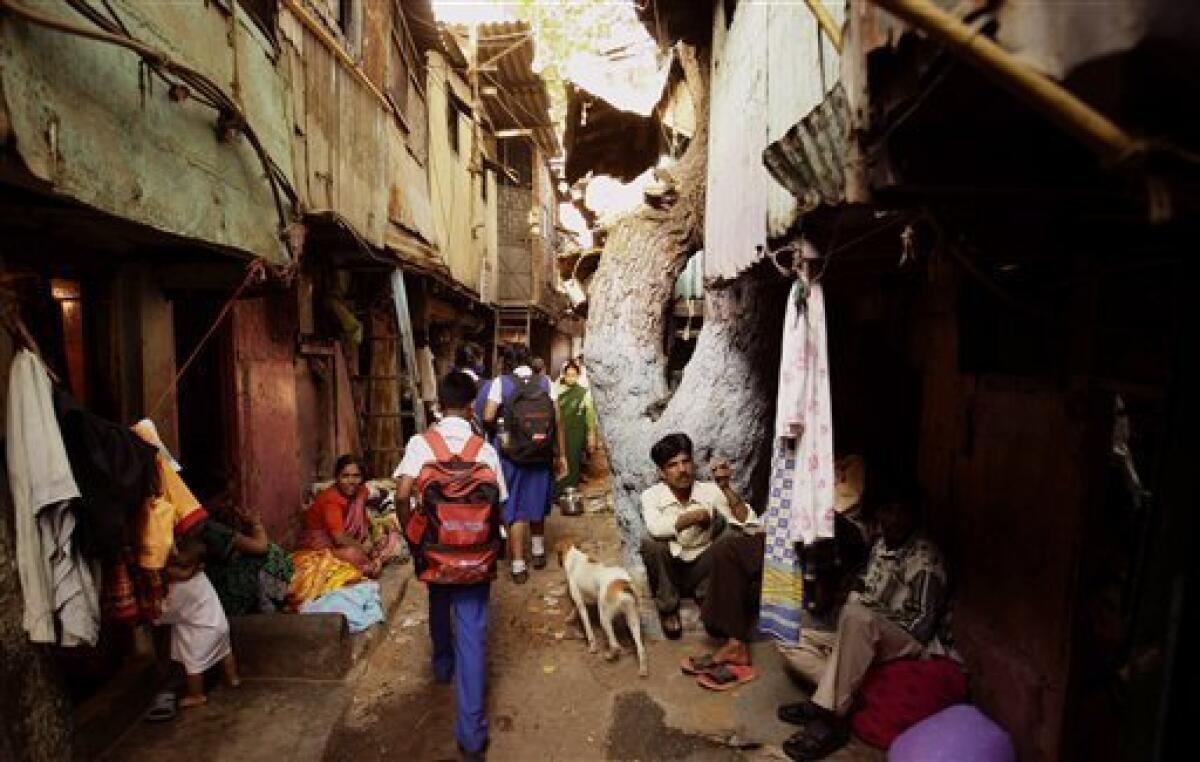Census: 1 in 6 India city residents lives in slums

About one in six Indian city residents lives in an urban slum with unsanitary conditions that are “unfit for human habitation,” according to the first complete census of India’s vast slum population.
More than 40 percent of households in Mumbai, India’s financial capital and largest city with 19 million people, are located in overcrowded shantytowns where most residents are squatting illegally and many have little access to basic sanitation.
While the report described open sewers and poverty, it also shows that many slum residents have cellphones and televisions in their shacks and have made do with a lack of government infrastructure by rigging up elaborate, mostly illegal, systems to supply electricity.
Life in Mumbai’s slums has been portrayed in the Oscar-winning film “Slumdog Millionaire” and last year’s bestselling book “Behind the Beautiful Forevers,” but until now India has never had a complete census of its slum dwellers.
There was an incomplete head count in 2001 that only included the country’s largest slums. In the 2011 census, survey takers took pains to visit every shantytown - they counted 108,000 of them - and also made detailed records of their lives, according to the report Thursday by census commissioner C. Chandramouli. Detailed information from India’s latest census is still trickling out.
The census report identified 13.8 million households - about 64 million people - located in city slums nationwide. That’s 17.4 percent of all urban households, which account for roughly one-third of India’s 1.2 billion people.
“A slum, for the purpose of census, has been defined as residential areas where dwellings are unfit for human habitation by reasons of dilapidation, overcrowding ... lack of ventilation, light or sanitation facility,” Chandramouli said.
New Delhi, the Indian capital, had a relatively low 15 percent of households in slums, while major cities Kolkata and Chennai had 30 percent and 29 percent respectively. High-tech center Bangalore had only 9 percent of its households in slums.
Nationwide, more than one-third of slum homes surveyed had no indoor toilets and 64 percent were not connected to sewerage systems.
About half of the households lived in only one room or shared with another family.
However, 70 percent had televisions and 64 percent had cellphones. That’s about the same cellphone ownership rate as the general urban population and only slightly less than the number of general city dwellers with televisions.